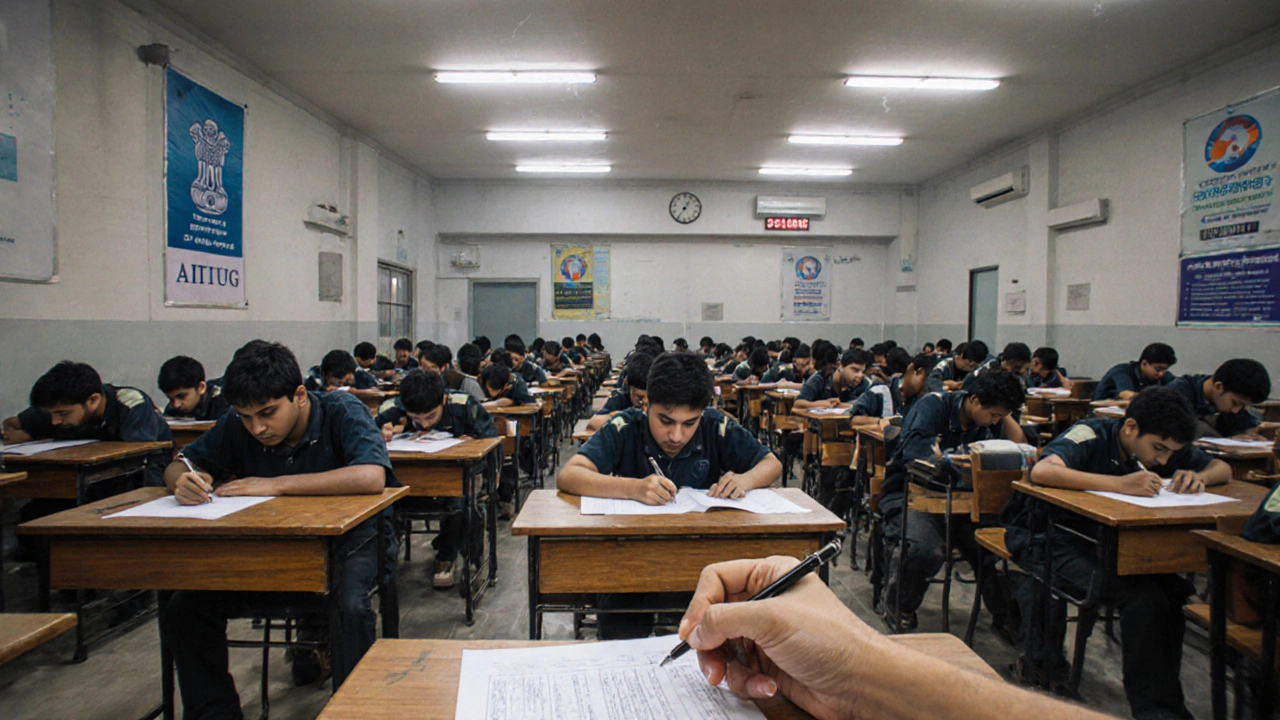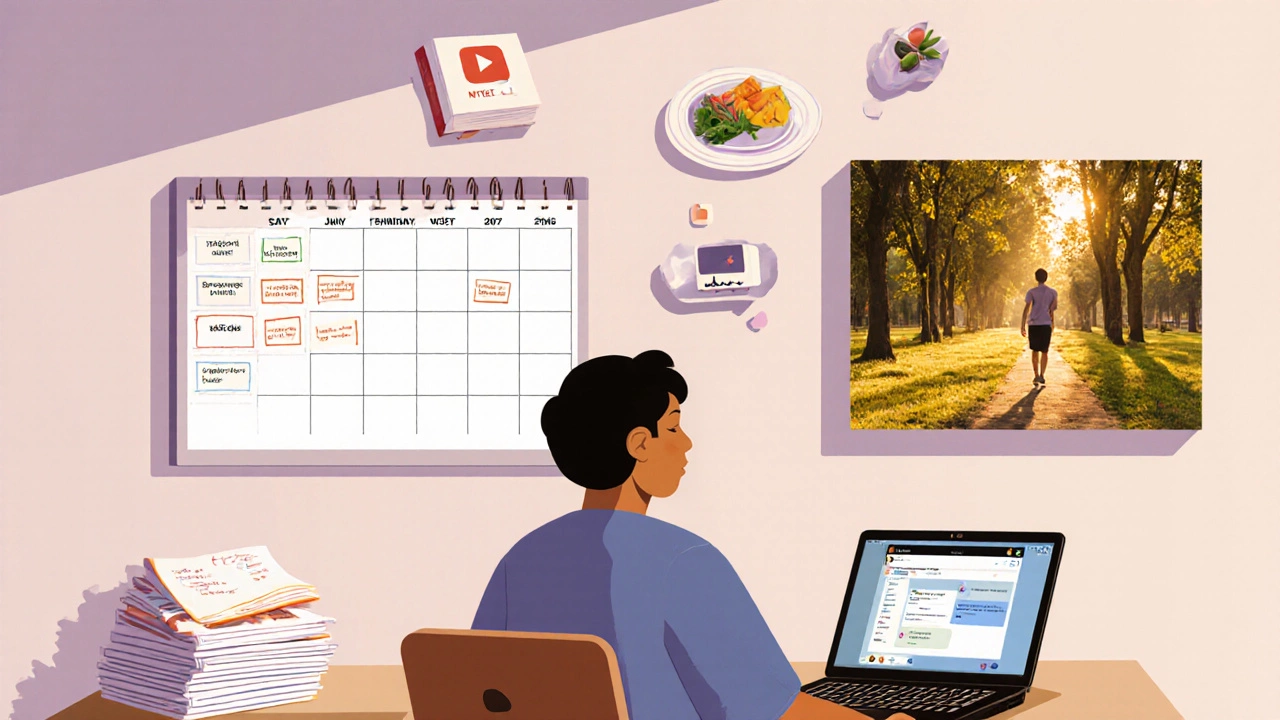
India's Hardest Degrees Quiz
IIT Engineering
Ultra-competitive JEE Advanced entrance exam with less than 1% selection rate.
Very DifficultMBBS
NEET entrance exam followed by 5-year rigorous medical curriculum.
DifficultChartered Accountant (CA)
Three-level examination process requiring years of self-study.
ModerateCivil Services (UPSC)
National-level exam with over 80% attrition rate in preliminary stages.
ChallengingDifficulty Factors Explained
- 1. Entrance Exam Difficulty: How competitive and challenging is the admission process
- 2. Curriculum Intensity: Workload and academic rigor during the program
- 3. Post-Graduation Employability: Career prospects and job market demand
- 4. Attrition Rate: Percentage of students who drop out before completion
Key Takeaways
- The most demanding degrees in India are usually those with ultra‑competitive entrance exams and low pass rates, such as IIT engineering and MBBS.
- Professional courses like Chartered Accountancy (CA) and the Civil Services (UPSC) require years of self‑study and have attrition rates exceeding 80%.
- Difficulty can be measured by entrance‑exam difficulty, curriculum workload, and post‑graduation employability.
- Choosing a tough degree should align with personal passion; raw difficulty alone doesn’t guarantee a better career.
- Effective preparation strategies include early syllabus familiarisation, regular mock tests, and building a support network.
When people ask “which is the toughest degree in India?”, they’re usually looking for a straight‑forward answer: the course that kills the most aspirants, demands the most study hours, and has the steepest entry barrier. The truth is a bit messier-difficulty varies by entrance exam, curriculum intensity, and even the grading culture of the institution.Below we break down the most consistently hard‑to‑crack programmes, compare them on concrete metrics, and give you a realistic picture of what life looks like inside each.
How We Rank Toughness
To keep things transparent, we used four measurable criteria:
- Entrance‑Exam Difficulty - based on cut‑off scores, number of applicants per seat, and the average percentile needed to clear the test.
- Curriculum Workload - average weekly study hours, lab/clinical requirements, and assessment frequency.
- Pass/Completion Rate - percentage of students who finish the programme within the stipulated time.
- Post‑Graduation Pressure - competition for internships, licensing exams, and job placements after graduation.
Each degree was scored on a 1‑10 scale for every criterion, then averaged to get a composite “toughness score”.
Top 8 Toughest Degrees in India
Below are the programmes that consistently rank highest on the composite score.
Engineering (IIT) is a highly selective undergraduate programme that admits students through the Joint Entrance Examination (JEE) Advanced. The curriculum blends intensive theory, rigorous laboratory work, and semester‑long projects, demanding at least 45‑50 study hours a week.
Medicine (MBBS) is a professional degree that prepares students for clinical practice. Admission hinges on the NEET‑UG exam, and the five‑year course includes pre‑clinical labs, clinical rotations, and a compulsory internship, often exceeding 60 hours of on‑site work per week.
Chartered Accountancy (CA) is a professional accounting qualification governed by the Institute of Chartered Accountants of India (ICAI). Candidates clear three rigorous exams (CA Foundation, Intermediate, Final) and complete a mandatory 3‑year articleship, with an average attrition rate of 85%.
Law (LLB) is a five‑year integrated law programme offered by National Law Universities (NLUs). Entrance is through the Common Law Admission Test (CLAT) or LSAT‑India, and the coursework combines dense case‑law reading, moot court participation, and multiple semester exams.
Architecture (B.Arch) is a five‑year degree blending design theory and technical drafting. Admission relies on the National Aptitude Test in Architecture (NATA) and a rigorous portfolio review, while studio work often requires 8‑10 hours of hands‑on design daily.
Pharmacy (M.Pharm) is a postgraduate programme focusing on drug development and regulatory science. Students must clear the Graduate Pharmacy Aptitude Test (GPAT) and then face a research‑intensive curriculum that includes weekly lab reports and a thesis.
Mathematics (M.Sc) is a research‑oriented postgraduate degree. Admission is based on undergraduate performance and often an entrance exam; the programme demands high‑level abstract thinking, weekly problem‑sets, and a final dissertation.
Civil Services (UPSC) is not a conventional degree but a competitive exam pathway to the Indian Administrative Service. Candidates typically spend 2‑4 years preparing, covering a syllabus of 12,000+ pages, with a success ratio below 0.2%.

Side‑by‑Side Comparison
| Degree | Entrance‑Exam Difficulty (1‑10) | Average Weekly Study Hours | Pass/Completion Rate (%) | Post‑Graduation Pressure (1‑10) |
|---|---|---|---|---|
| Engineering (IIT) | 9.5 | 45‑50 | 85 | 8 |
| Medicine (MBBS) | 9.2 | 60‑70 | 78 | 9 |
| Chartered Accountancy (CA) | 8.8 | 35‑40 (plus 3‑year articleship) | 15 | 9.5 |
| Law (LLB) | 8.0 | 30‑35 | 70 | 7 |
| Architecture (B.Arch) | 8.3 | 40‑45 (studio‑heavy) | 65 | 7.5 |
| Pharmacy (M.Pharm) | 7.5 | 35‑40 (lab‑intensive) | 72 | 6.5 |
| Mathematics (M.Sc) | 7.8 | 30‑35 | 80 | 6 |
| Civil Services (UPSC) | 10 | 50‑60 (self‑study) | 0.2 | 10 |
Why These Degrees Feel So Hard
Understanding the “why” helps you decide if the challenge aligns with your goals.
- Ultra‑Competitive Entry: IITs receive over 2million JEE‑Advanced applications for just 12,000 seats. The NEET‑UG sees a 1.5million applicant pool for roughly 80,000 MBBS seats.
- Continuous Assessment: CA candidates face three staged exams, each demanding months of focused revision, plus a 3‑year apprenticeship that counts as part of the qualification.
- Practical Demands: MBBS and Architecture require hands‑on training (clinical rotations, studio projects) that push students beyond textbook learning.
- High Stakes Licensing: After MBBS, you must clear the FMGE (or NEET‑PG) to practice; after CA, the final exam is the “CA Final” - both have pass rates below 30%.
- Vast Syllabus: UPSC’s General Studies paper touches on history, geography, economics, ethics, and current affairs, creating a cognitive overload for most aspirants.
Tips to Survive (or Thrive) in a Tough Programme
Even if you choose one of these demanding courses, a smart strategy can make the journey manageable.
- Start Early with the Syllabus: Map out every chapter before the semester begins. For JEE‑Advanced, create a 12‑month revision calendar covering physics, chemistry, and maths topics.
- Master the Art of Mock Exams: Simulate real‑test conditions at least once a week. For CA, the ICAI provides past papers that mimic the exam’s pattern; practice under timed conditions.
- Build a Support Network: Join study groups on platforms like Telegram or Discord. Peer explanation often clarifies concepts that textbooks present ambiguously.
- Leverage Quality Resources: Use NCERT books for NEET, NPTEL video lectures for IIT courses, and the ICAI’s recommended study material for CA.
- Maintain Health Routines: A 30‑minute walk, regular sleep (7‑8 hours), and balanced meals keep cognitive stamina high during marathon study sessions.
- Set Micro‑Goals: Instead of "finish physics", aim for "solve 10 differential equations today". Small wins reduce burnout.

Is the Toughest Degree Always the Best Choice?
Hardness doesn’t guarantee better salaries or job security. For instance, an MBBS graduate earns a respectable salary, but an IIT engineer often enjoys higher starting packages and diverse industry options. Conversely, a CA may command high fees in auditing firms, yet the initial years involve low‑pay articleship work.
Ask yourself:
- Do I genuinely enjoy the subject, or am I chasing prestige?
- Can I sustain the mental and physical pressure for 4‑5 years?
- Is there a clear career path after graduation that matches my lifestyle goals?
If the answers are yes, the difficulty becomes a badge of honor rather than a burden.
Future Outlook: Will These Degrees Remain the Toughest?
Education reforms and new testing models could shift the landscape. The National Education Policy (NEP) 2020 aims to reduce rote learning, potentially easing **engineering** curricula over the next decade. Similarly, the introduction of AI‑based tutoring platforms may lower the barrier for self‑studying UPSC aspirants.
However, the core challenge-limited seats versus massive demand-will likely stay intact for the next few years because the prestige associated with IITs, AIIMS, and the IAS remains unparalleled.
Frequently Asked Questions
Which degree has the lowest pass rate in India?
Chartered Accountancy (CA) records the lowest pass rate among professional courses, with only about 15% of candidates clearing all three exam stages on their first attempt.
Is the IIT engineering programme harder than MBBS?
Both are extremely demanding but in different ways. IIT engineering has a higher entrance‑exam cutoff and intense problem‑solving workload, while MBBS adds clinical rotations and a mandatory internship, often extending weekly hours beyond 60. Personal aptitude usually decides which feels tougher.
Can I switch from a tough degree to a less demanding one later?
Switching is possible but involves clearing a new entrance test or meeting transfer criteria set by the target institution. For example, an engineering graduate can pursue an MBA after clearing the CAT, but they must meet the MBA program’s academic and work‑experience requirements.
What are the best online resources for UPSC preparation?
Top platforms include the official UPSC website for past papers, the ‘Clear IAS’ YouTube channel for lecture series, and the ‘Insights IAS’ mobile app for daily current‑affairs quizzes. Pair these with a structured 12‑month plan to cover the vast syllabus.
Does studying a tough degree guarantee a high salary?
Not automatically. Salary depends on industry demand, individual performance, and networking. An IIT graduate entering software engineering often starts at 12-15LPA, while a CA may begin with a modest stipend during articleship before earning higher fees as a qualified chartered accountant.
